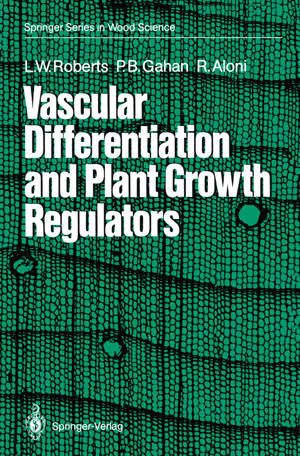
- Afhalen na 1 uur in een winkel met voorraad
- Gratis thuislevering in België vanaf € 30
- Ruim aanbod met 7 miljoen producten
- Afhalen na 1 uur in een winkel met voorraad
- Gratis thuislevering in België vanaf € 30
- Ruim aanbod met 7 miljoen producten
Zoeken
€ 147,95
+ 295 punten
Omschrijving
The vascular tissue of higher plants has been an object of continuous detailed study since the invention of the light microscope. As relevant new physical, chemical and biochemical techniques and concepts have appeared over the years, they have regularly and immediately been applied to this field of enquiry. The reasons are not far to seek. Vascular tissue provides the long-distance transport system for water and nutrients within the plant, and an understanding of the structure and development of the pathways within it is essential for an under- standing of growth in all higher plants, including crop plants. Moreover, parts of the vascular tissue - the whole of the xylem and the fibers of the proble- have been, and still are, in high demand commercially for their unique properties and as the only renewable structural material on earth. There are, in addition, more subtle ways in which xylogenesis, particularly as it allows the development of tree species, contributes to the environment. A few years ago, while walking in the foothills of the Pyrenees, I found all this expressed more elegantly than I can express it, in a plea carved in wood at the entrance to a forest: Homme!! Je suis la chaleur de ton foyer par les froids nuits d'hiver, l'ombrage ami lorsque brule Ie soleil d'ete, l'eau des rivieres et des sources. Je suis la charpente de ta maison, la planche de ta table.
Specificaties
Betrokkenen
- Auteur(s):
- Uitgeverij:
Inhoud
- Aantal bladzijden:
- 154
- Taal:
- Engels
- Reeks:
Eigenschappen
- Productcode (EAN):
- 9783642734489
- Verschijningsdatum:
- 21/12/2011
- Uitvoering:
- Paperback
- Formaat:
- Trade paperback (VS)
- Afmetingen:
- 170 mm x 244 mm
- Gewicht:
- 276 g

Alleen bij Standaard Boekhandel
+ 295 punten op je klantenkaart van Standaard Boekhandel
Beoordelingen
We publiceren alleen reviews die voldoen aan de voorwaarden voor reviews. Bekijk onze voorwaarden voor reviews.








